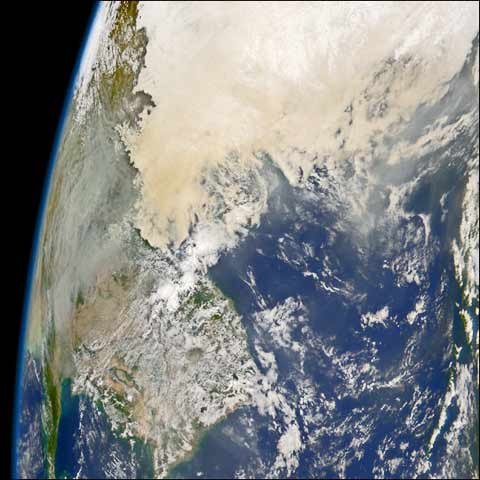"Brown clouds" of pollutants darken Asian cities, UN says
 Beijing - Vast "brown clouds" of pollution are making Asian cities darker, melting Himalayan glaciers and intensifying regional monsoons, a UN report said on Thursday.
Beijing - Vast "brown clouds" of pollution are making Asian cities darker, melting Himalayan glaciers and intensifying regional monsoons, a UN report said on Thursday.
A team of scientists highlighted the three effects after studying a "more than 3-kilometre-thick layer of soot and other manmade particles that stretches from the Arabian Peninsula to China and the western Pacific Ocean," the United Nations Environment Programme said.
The "atmospheric brown clouds" result from the burning of fossil fuels and biomass, and in some areas also worsen the impact of climate change caused by greenhouse gas emissions, the UNEP report said.
At least 13 major cities in Asia and other regions, including Beijing and New Delhi, get less sunlight because of the pollution, while its effects on air quality and agriculture in Asia pose "increasing risks to human health and food production for three billion people."
The other darker cities identified were Bangkok, Cairo, Dhaka, Karachi, Kolkata, Lagos, Mumbai, Seoul, Shanghai, Shenzhen and Teheran.
The natural light was between 10 per cent and 25 per cent dimmer in cities such as Karachi, Beijing, Shanghai and New Delhi, the report said.
India as a whole had become darker by about 2 per cent per decade between 1960 and 2000, while China had lost its natural light by about 3 per cent to 4 per cent per decade from the 1950s to the 1990s.
"One of UNEP's central mandates is science-based early warning of serious and significant environmental challenges," UNEP Executive Director Achim Steiner said in a statement.
"I expect the atmospheric brown cloud (ABC) to be now firmly on the international community's radar as a result of today's report," Steiner said.
Scientists from the United States, Europe, China, India and other Asian nations had studied the formation of clouds of pollutants since 2002, when their initial findings were met with scepticism, said lead scientist Veerabhadran Ramanathan of the US-based Scripps Institution of Oceanography.
"We believe today's report brings ever more clarity to the ABC phenomena and in doing so must trigger an international response - one that tackles the twin threats of greenhouse gases and brown clouds and the unsustainable development that underpins both," Ramanathan said.
"One of the most serious problems highlighted in the report is the documented retreat of the Hind Kush-Himalayan-Tibetan glaciers, which provide the head-waters for most Asian rivers, and thus have serious implications for the water and food security of Asia," he said.
The report identified three Asian regional hotspots for the giant clouds of pollution: eastern China; the Indo-Gangetic plains stretching across parts of India, Pakistan, Bangladesh and Myanmar; and South-East Asia, including Cambodia, Indonesia, Thailand, and Vietnam.
Southern Africa and the Amazon Basin in South America were other hotspots, while smaller seasonal hotspots were found in Europe and eastern North America. (dpa)